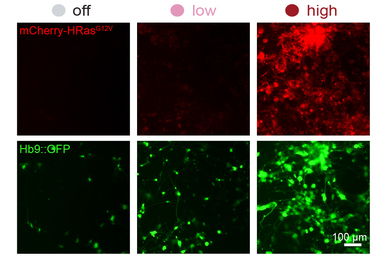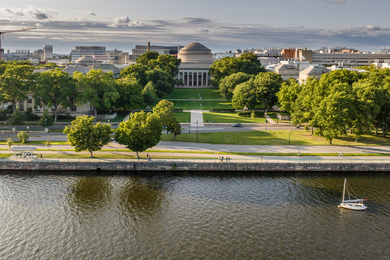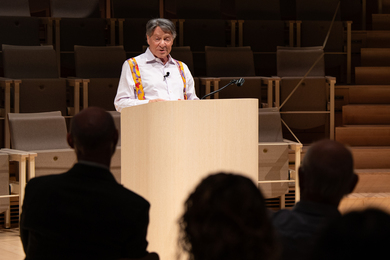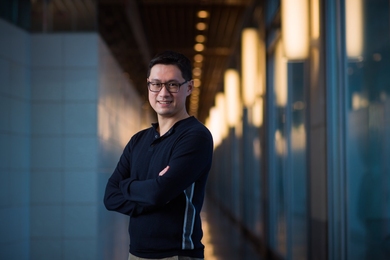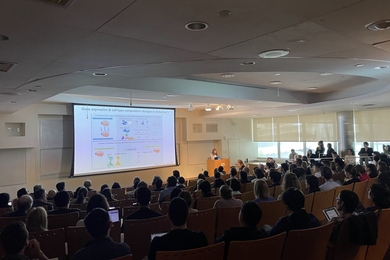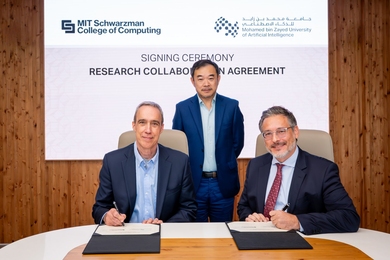Scientists from MIT and two other institutions have joined together to create a new center for research on issues involving oceanographic, biological and environmental health sciences.
MIT will join the Woods Hole Oceanographic Institution (WHOI) and Marine Biological Laboratory, both in Woods Hole, Mass., to form the Woods Hole Center for Oceans and Human Health (COHH), based at WHOI. MIT Associate Professor Martin Polz, who develops molecular approaches to understanding marine and aquatic ecosystems, will coordinate MIT research for the new center.
"The Woods Hole center is an important step forward in addressing the ongoing but poorly understood deterioration of coastal ecosystems and its effects on human health," said Polz. "It unites a number of researchers from different disciplines to focus on some of the most important existing and future problems caused by infectious and harmful biological agents."
The Woods Hole COHH is one of four being established with funding from the National Science Foundation and the National Institute of Environmental Health Sciences, one of the National Institutes of Health. The other three Centers for Oceans and Human Health will be located at the University of Miami, the University of Hawaii, and the University of Washington (Seattle). The federal agencies expect to invest a combined total of $25 million over a five-year period to support the four centers.
The Woods Hole center will receive about $6.25 million. Its mission is to improve public health by learning how oceanic processes affect the distribution and persistence of human pathogens or products of toxin-producing organisms. Four research projects, including Polz's, will be supported during the five years.
The major research focus will be the distribution of biological organisms that have potential consequences for human health in the temperate coastal ocean and its bays, harbors and estuaries. Many of the major urban areas of North America lie in or adjacent to the coastal zone, where an estimated 9 billion gallons of domestic sewage and industrial wastewater enter the coastal ocean each day. Contamination of coastal waters with human pathogens from this waste, and the distribution and persistence of these pathogens, are serious threats to public health.
The first two research projects involve studies of harmful algal blooms or red tide populations in the Gulf of Maine. The third project will focus on coastal ecology and physical processes that may influence human health risks from infectious organisms in polluted coastal and estuarine waters of Mount Hope Bay in Massachusetts.
Coastal bacteria
The fourth research project, which will be conducted by the Polz research group, is on the ecology and evolution of two marine pathogens, the closely related bacteria Vibrio vulnificus and V. parahaemolyticus, and modeling of various coastal ocean processes affecting the growth and distribution of populations of these organisms.
V. vulnificus is responsible for about 95 percent of seafood-related deaths and may be the reason for the rise in lethal wound infections acquired during recreational use of coastal waters. The second bacterium, V. parahaemolytiicus, is believed to be the cause of outbreaks of dysentery after people eat contaminated shellfish harvested from temperate coastal waters.
"Our goal is to understand why and when specific environmental conditions trigger the occurrence of these harmful bacteria in coastal waters," Polz said.
According to COHH director John Stegeman, a senior scientist and chair of the WHOI biology department, a goal of the center is to foster interaction among investigators in the Woods Hole and Cambridge scientific communities. The new center will integrate the three institutions' strengths in marine biology, genomics, and physical oceanography and modeling, and encourage new collaborations.
"The results of studies in the Woods Hole Center for Oceans and Human Health will be important locally, and the observations we make could spark a new appreciation of the risks associated with the potential human health consequences of some coastal organisms," Stegeman said. "We expect the insights generated by these research projects will influence the ways pathogens and harmful algal blooms are viewed by the public."
Mitchell Sogin, a senior scientist and director of the Josephine Bay Paul Center for Comparative Molecular Biology and Evolution at the Marine Biological Laboratory, will direct the Genomics Facility Core of COHH, housed in the MBL's W.M. Keck Ecological and Evolutionary Genetics Facility.
